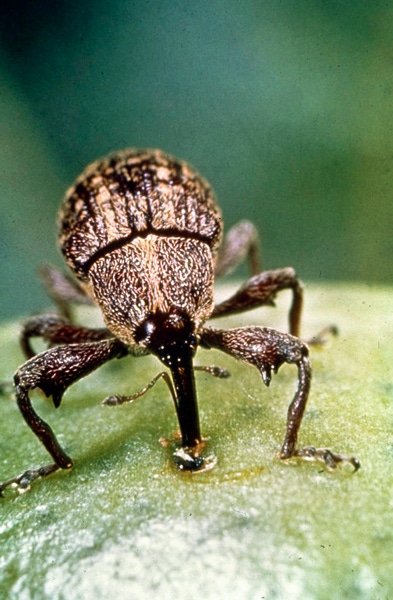September 21, 2010

The Oklahoma Boll Weevil Eradication Organization (OBWEO) has recommended upgrading Oklahoma's eradication status to functionally eradicated statewide from active eradication in eastern counties and suppressed status statewide, according to Joe Harris, OBWEO director.
"Texas is doing the same in its north central and western zones," Harris said.
To date, no boll weevils have been caught in the 2010 cotton season, Harris said. Trap density is one to 60 acres in five southwest counties and one to 80 acres elsewhere on approximately 272,000 acres, he reported.
OBWEO directors voted to set the 2011 crop year assessment, which supports the boll weevil eradication program, at $2 per acre of harvested cotton, Harris said.
Transition year
This year has been a year of transition for the OBWEO program's Information Technology department. A new eradication manager online program was installed to replace the old system that could no longer be supported, Harris said.
The new system focuses on deployed traps rather than on mapped fields, he said. It employs a single GPS unit and a separate data logger to mark trap locations and to log inspection results, including when and by whom traps were inspected each cycle. Trap location is a critical component of the program.
The new eradication manager keys on trap locations because across the cotton belt, certified cotton acres, upon which assessments are based, plus farm numbers and Common Land Units (CLU) are already provided to the various eradication programs by periodic updates from the respective USDA Farm Service Agency (FSA) state offices.
FSA certified acres have been shown to be as accurate as acres resulting from in-house mapping CLUs, he said, which, along with certified acres data, render in-house mapping an expensive redundancy.
Accurate maps
The resulting maps will show areas containing certified cotton acres along with the location of deployed traps. While the FSA is working to modify all CLUs to show only certified cotton, we can still map any field where certified and/or harvested acres need to be verified, he said.
Starting up the new system coincided, as a result of the 2008 Farm Bill, with the institution of requirements restricting the availability of federally provided producer information, including certified acres and other data such as farm numbers, he said.
To ensure against unauthorized release of information while the new rules are being digested and user friendly compilations of FSA data are being pursued, the agency has limited online eradication manager data access only to OBWEO personnel. Gins or individual producers desiring specific information are invited to contact the OBWEO Hobart, Okla., office at 580-726-4280.
The Oklahoma Department of Agriculture, Food and Forestry has redone the Sensitive Crop Viewer section on its website, Harris said. OBWEO is working to incorporate cotton CLUs as well. For next season, early reporting/certification of cotton acres will ensure timely inclusion of CLUs and trap locations onto the system, he said.
TALKIN' COTTON is produced by NTOK Cotton, an industry partnership supporting and encouraging increased cotton production in the Rolling Plains of North Texas, Oklahoma and Kansas. For more information on the cotton scene, see ntokcotton.org and okiecotton.org. For information concerning Talkin' Cotton, contact [email protected].
You May Also Like




